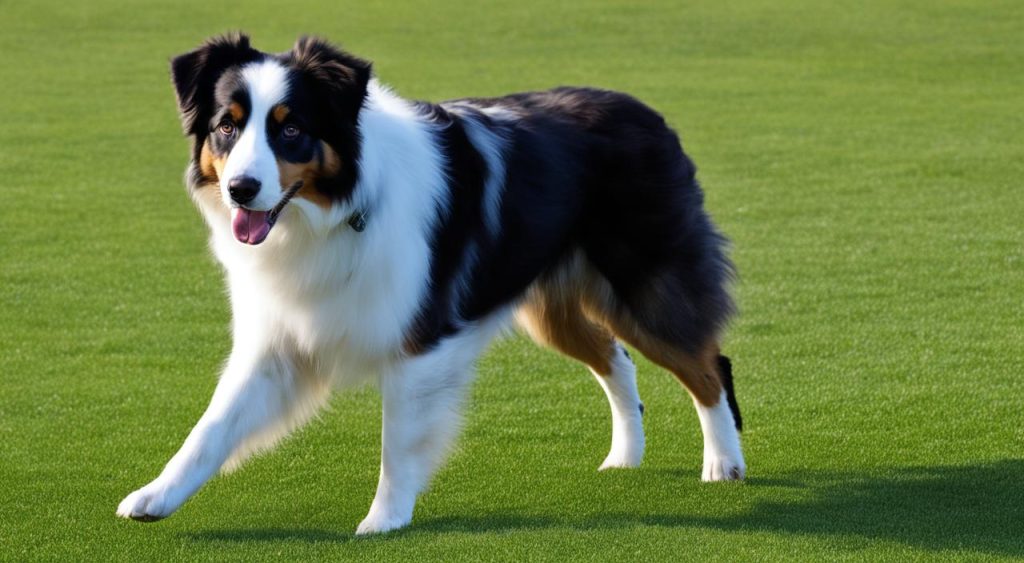Australian Shepherds are a popular breed known for their intelligence and versatility. If you’re considering adding one of these amazing dogs to your family, it’s natural to wonder about their size. In this article, we’ll explore the average size of Australian Shepherds, the factors that influence their size, and other important considerations for caring for these beloved pets.
The average height of an adult Australian Shepherd is between 20-24 inches at the shoulder. The males of the breed typically tend to be slightly larger than the females. When it comes to weight, Aussie dogs generally range from 40-65 pounds, with males typically being on the higher end of the scale. However, it’s worth noting that there can be variations in size even within the same breed.
Several factors can influence the size of an Australian Shepherd. Genetics play a significant role, as the size of the dog’s parents can give you an idea of their potential size. Additionally, the growth rate of the dog during their puppyhood and adolescent stages can impact their final size. Proper nutrition, exercise, and regular veterinary care are essential for ensuring healthy growth and development.
When considering the size of an Aussie dog, it’s important to remember that individual dogs may fall outside the average size range. Factors such as genetics, diet, exercise, and overall health can all contribute to variations in size. If you’re curious about the expected size of a specific Australian Shepherd, consult with a veterinary professional or refer to a breed-specific size chart for more accurate information.
Key Takeaways:
- Australian Shepherds are medium-sized dogs, with an average height of 20-24 inches at the shoulder.
- Male Australian Shepherds are typically larger than females.
- The average weight of an Aussie dog ranges from 40-65 pounds.
- Individual dogs may vary in size due to factors such as genetics, diet, exercise, and overall health.
- Consult with a veterinary professional or refer to a breed-specific size chart for a more accurate assessment of an Australian Shepherd’s expected size.
Factors Influencing Aussie Dog Size
Several factors can influence the size of an Australian Shepherd. One important factor is genetics. The size of an Aussie’s parents can give an indication of the potential size of their offspring.
Additionally, the growth rate of the dog can affect their final size. Proper nutrition, exercise, and veterinary care can contribute to healthy growth and development.
It’s also important to note that there can be variations in size within the breed. Some Australian Shepherds may be smaller or larger than the average size range.
Finally, a breed-specific size chart can provide a general reference for the expected size of an Australian Shepherd based on their age and weight.
Care and Considerations for Aussie Dogs
Australian Shepherds are known for their active and intelligent nature. To ensure their well-being, it’s important to provide them with regular exercise to keep them physically and mentally stimulated. Daily walks, playtime, and interactive activities are essential for your Aussie’s overall happiness and health. Their energetic personality thrives on engaging activities that challenge their minds and keep them entertained.
Grooming is another important aspect of caring for Australian Shepherds. Their medium-length double coat requires regular brushing to prevent matting and keep it in good condition. Aim to brush your Aussie’s coat at least once or twice a week, paying attention to areas prone to tangles, such as behind the ears and around the tail. This not only helps maintain their coat’s appearance but also promotes good hygiene and prevents skin issues.
While Australian Shepherds are generally healthy dogs, it’s essential to be aware of potential health issues that can affect them. Some common health concerns in Australian Shepherds include hip and elbow dysplasia, progressive retinal atrophy, hereditary cataracts, and epilepsy. Regular veterinary check-ups and a proactive approach to their well-being can help detect and manage these conditions early on.
By providing your Aussie with regular exercise, proper grooming, and attentive healthcare, you can ensure their overall well-being and enjoy a happy and healthy life together.





